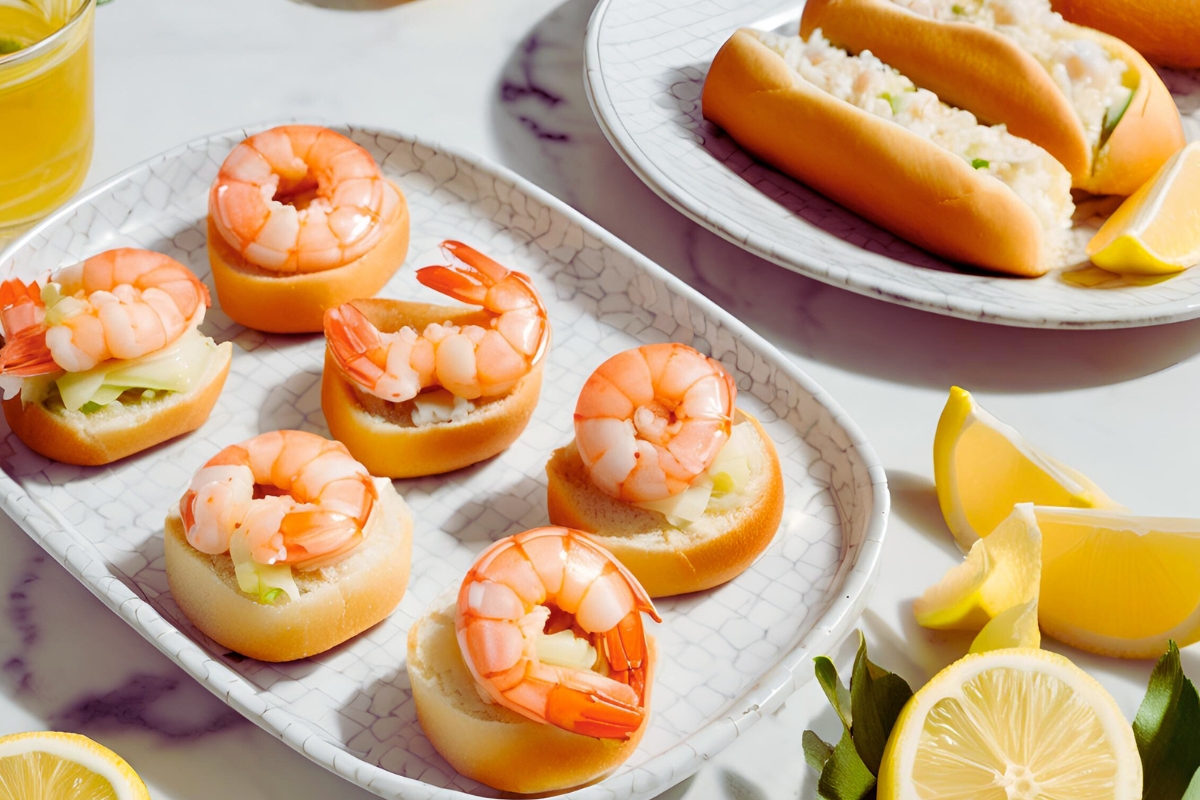Introduction to Shrimp Rolls
When it comes to seafood delights, few dishes have captured hearts (and taste buds) quite like shrimp rolls. Whether you’re enjoying a picnic by the beach or a casual lunch at home, shrimp rolls bring a touch of gourmet flair to everyday meals. But what exactly makes them so special? Let’s dive into their origins, variations, and why they’ve become such a beloved staple for foodies around the globe.
What Are Shrimp Rolls?
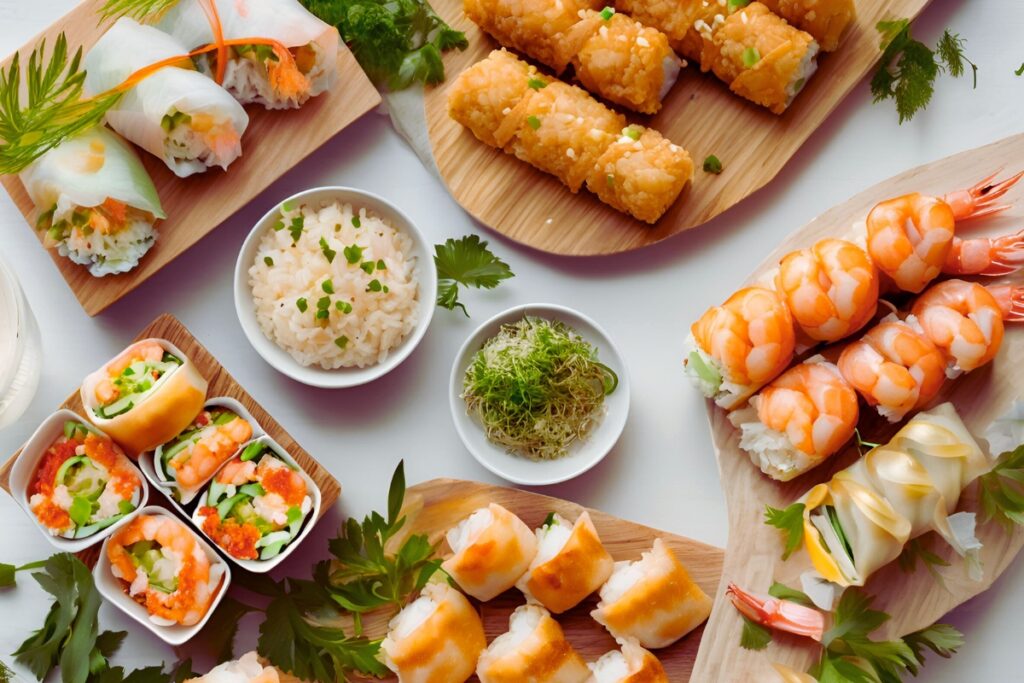
Shrimp rolls are essentially a delicious combination of shrimp and a soft bread or wrapper, paired with flavorful seasonings and sometimes a creamy dressing. The shrimp can be cooked or grilled, and the rolls are often served chilled or slightly warm. However, what defines a shrimp roll varies depending on where you are. Some versions highlight simplicity, while others are brimming with bold, zesty flavors.
Origins and Popularity of Shrimp Rolls
Shrimp rolls originated in coastal communities where people had access to abundant fresh seafood. In New England, for example, cooks pair the shrimp roll with its cousin, the lobster roll, and dress it in a light mayo-based dressing. Meanwhile, Asian-inspired versions often feature rice paper wrappers filled with a mix of herbs and vegetables. Over the years, people worldwide have embraced these rolls for their versatility and ability to adapt to local tastes.
Types of Shrimp Rolls Around the World
Shrimp rolls come in many forms, each with its own unique spin:
- New England Shrimp Roll: A classic, featuring shrimp tossed in mayo and served in a buttery split-top bun.
- Asian Shrimp Spring Roll: Wrapped in translucent rice paper and filled with shrimp, fresh herbs, and crunchy vegetables.
- Golden Shrimp Roll: A fried version with a crispy outer layer, often served as an appetizer.
These variations highlight how shrimp rolls can fit into any cuisine or dining occasion. From light and healthy to indulgent and crispy, there’s something for everyone.
Why Are Shrimp Rolls a Favorite Dish?
There are countless reasons why shrimp rolls have secured a top spot in the hearts of seafood lovers. Let’s break it down:
Versatility and Ease of Preparation
One of the best things about shrimp rolls is how adaptable they are. You can whip up a classic version in minutes or get creative with exotic flavors. Plus, they’re perfect for any setting—a quick lunch, a party appetizer, or even a fancy dinner.
Additionally, shrimp rolls don’t require advanced cooking skills. With a few simple steps, anyone can create a restaurant-quality dish at home. For example, you can use pre-cooked shrimp for a faster option or marinate fresh shrimp to elevate the flavor.
Unique Flavor Profiles of Shrimp Rolls
Shrimp rolls strike a beautiful balance between simplicity and sophistication. The natural sweetness of shrimp pairs wonderfully with buttery rolls, tangy sauces, or spicy seasonings. Depending on how you prepare them, the flavors can be light and refreshing or rich and decadent.
Popular Accompaniments and Pairings
Shrimp rolls are often enjoyed with a side of chips, a crisp salad, or a cup of clam chowder. Beverage pairings can range from iced tea to a chilled white wine, depending on the vibe you’re going for. These sides and drinks enhance the experience, making shrimp rolls a true culinary delight.
Common Misconceptions About Shrimp Rolls
Despite their popularity, there are a few misconceptions about shrimp rolls that deserve clarification.
Are Shrimp Rolls Always Healthy?
While shrimp rolls can be a healthy choice, not all versions are created equal. The nutritional value depends on the ingredients and preparation methods. For example, fried shrimp rolls or those with heavy dressings can be high in calories and fats. On the other hand, steamed shrimp with light seasonings can be a nutritious option.
Misunderstandings About Ingredients and Cooking Methods
Some people assume making shrimp rolls is complicated or requires exotic ingredients. However, that idea couldn’t be further from the truth. You can prepare a delicious shrimp roll using everyday staples like fresh shrimp, bread, and a few seasonings. Additionally, many believe shrimp must always be fried for these rolls, but several recipes incorporate grilled, boiled, or steamed shrimp for a healthier twist.
Shrimp rolls are a testament to the beauty of simplicity in cooking. Whether you stick to a classic recipe or experiment with bold flavors, they’re sure to impress.
Understanding the Ingredients
When you think about shrimp rolls, the first thing that probably comes to mind is the plump, juicy shrimp. But what truly makes a shrimp roll shine is the perfect harmony of ingredients working together to create a mouthwatering experience. From the type of shrimp you choose to the bread or wrappers that hold it all together, every component plays a vital role. Let’s dive deeper into the details.
What Goes Into a Classic Shrimp Roll?
A classic shrimp roll typically features a handful of simple, high-quality ingredients. The core elements include shrimp, bread, a dressing or sauce, and some optional extras like herbs or spices to enhance the flavor. However, getting these basics just right is what sets an exceptional shrimp roll apart from an average one.
The Role of Shrimp: Cooked or Raw?
The shrimp is undeniably the star of the show. Most traditional shrimp rolls use cooked shrimp, which can be boiled, grilled, or sautéed depending on personal preference. Freshness is key here—fresh shrimp provide a sweet, succulent flavor that frozen alternatives often lack.
On the other hand, some recipes embrace raw shrimp, especially in Asian-inspired variations where the shrimp is lightly cured or marinated. This method creates a delicate texture and allows the natural sweetness of the shrimp to shine through.
Bread or Wrappers: Traditional Choices Explained
The choice of bread or wrapper can significantly influence the overall experience. Classic New England shrimp rolls use buttery split-top buns, which are lightly toasted for a golden, crispy exterior and a soft, fluffy interior. These buns are perfect for soaking up the dressing without falling apart.
For those seeking a lighter option, lettuce wraps or rice paper wrappers are excellent substitutes. These alternatives not only cut down on calories but also add a fresh, crisp element to the dish.
Variations and Substitutes for Shrimp Rolls
While the classic shrimp roll is a timeless favorite, there’s no shortage of creative twists and substitutes that cater to different dietary needs and taste preferences. For instance, gluten-free options and low-carb variations allow everyone to enjoy this dish. Additionally, plant-based alternatives ensure that even vegetarians and vegans can savor the essence of a shrimp roll. Consequently, these innovations make shrimp rolls versatile and inclusive for all.
Gluten-Free and Low-Carb Options
For those avoiding gluten, there are plenty of alternatives to traditional buns. Gluten-free bread, lettuce wraps, or even hollowed-out cucumbers make excellent choices. These options maintain the structural integrity of the roll while keeping it accessible for everyone.
Low-carb enthusiasts often lean toward wraps made from collard greens or cabbage leaves. These provide a sturdy, crunchy base that complements the shrimp without adding unnecessary carbs.
Vegetarian and Vegan Alternatives
Although shrimp is the centerpiece of this dish, vegetarians and vegans can still enjoy the essence of a “shrimp roll” by using plant-based substitutes. For instance, hearts of palm or artichoke hearts can mimic the texture of shrimp, while a mix of smoked paprika, garlic, and lemon juice adds a seafood-like flavor.
Another popular option is using tofu or tempeh, seasoned and grilled to perfection. These alternatives prove that you don’t need shrimp to enjoy a satisfying roll.
Nutritional Insights About Shrimp Rolls
If you’ve ever wondered whether shrimp rolls are a healthy choice, the answer depends on the ingredients and preparation methods. Let’s break it down:
Are Shrimp Rolls Good for You?
Shrimps can be a nutritious option, especially when made with fresh ingredients and healthier substitutes for high-calorie components. Shrimp itself is low in calories and high in protein, making it an excellent choice for those looking to maintain or lose weight.
Health Benefits of Shrimp as a Protein Source
Shrimp is not only delicious but also packed with essential nutrients. It’s rich in protein, which helps with muscle repair and growth, and contains omega-3 fatty acids, which support heart health. Additionally, shrimp is a good source of vitamins like B12 and minerals such as zinc and selenium.
Potential Drawbacks: Calories, Fats, and Additives
However, it’s important to note that not all shrimp rolls are inherently healthy. For example, traditional rolls with buttery buns and creamy dressings can be high in calories and saturated fats. Furthermore, some store-bought versions may include preservatives or artificial additives, which detract from their nutritional value. Therefore, being mindful of the ingredients is crucial when choosing or preparing shrimp rolls.
Calorie Count in Shrimp Rolls
The calorie content of a shrimp roll can vary widely depending on how it’s prepared. Here’s a rough breakdown:
- Classic Shrimp Roll: Around 300-400 calories per serving, depending on the bun and dressing.
- Low-Calorie Version: Using lettuce wraps and a light vinaigrette, you can cut this down to about 150-200 calories.
- Fried Variants: These can reach 500-600 calories due to the added oil and breading.
Comparison of Traditional and Modified Recipes
For a healthier alternative, consider swapping out traditional buns for gluten-free or low-carb options and using Greek yogurt instead of mayonnaise for the dressing. These small changes can significantly reduce calorie and fat content without compromising on taste.
Tips for Lower-Calorie Preparations
If you’re looking to enjoy without the guilt, here are some practical tips:
- Use whole-grain or gluten-free bread for added fiber and nutrients.
- Opt for fresh shrimp rather than pre-cooked or frozen varieties to avoid sodium-packed preservatives.
- Replace heavy dressings with lighter options like olive oil and lemon juice or a yogurt-based sauce.
- Incorporate fresh vegetables like cucumbers, shredded carrots, or leafy greens for extra crunch and nutrition.
By being mindful of your ingredient choices, you can create a shrimp roll that’s not only delicious but also aligned with your health goals.
Making the Perfect Shrimp Roll at Home
There’s something incredibly satisfying about creating a restaurant-worthy dish in the comfort of your own kitchen. Shrimp rolls are no exception. With just a few high-quality ingredients and simple techniques, you can whip up a dish that rivals your favorite seafood joint. Let’s explore how to make the perfect shrimp roll step by step, along with some creative twists to elevate your meal.
Step-by-Step Guide to a Classic Shrimp Roll
A classic shrimp roll is all about balance—succulent shrimp, buttery bread, and flavorful dressing working together harmoniously. Here’s how to make it from scratch:
Choosing the Right Ingredients
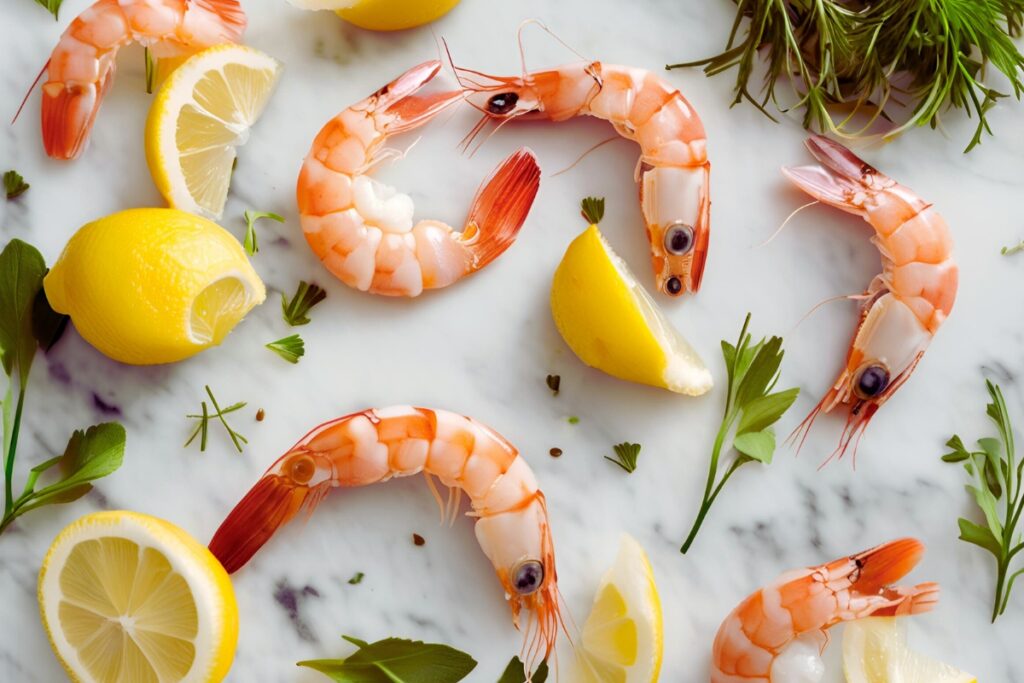
The foundation of any great shrimp roll lies in the ingredients. Start with fresh shrimp, as they offer the best flavor and texture. Look for shrimp that are firm, slightly translucent, and free of any strong odors.
For the bread, opt for split-top buns, as their unique shape holds the filling perfectly. Lightly toasting the buns with butter adds a golden crispness that contrasts beautifully with the creamy shrimp filling. As for the dressing, a classic mix of mayonnaise, lemon juice, and a touch of Dijon mustard creates a tangy, creamy base.
Cooking Techniques for Shrimp
Cooking the shrimp properly is crucial to achieving that tender, juicy texture. Begin by peeling and deveining the shrimp. Then, choose a cooking method:
- Boiling: Bring a pot of salted water to a boil, add the shrimp, and cook for 2-3 minutes until they turn pink.
- Grilling: Toss the shrimp in olive oil and season with salt and pepper before grilling for about 2 minutes per side.
- Sautéing: Heat butter or oil in a skillet, add the shrimp, and cook over medium heat for 2-3 minutes until fully cooked.
Once cooked, let the shrimp cool before chopping them into bite-sized pieces.
Tips for Toasting and Preparing the Roll
Toasting the bun may seem like a minor detail, but it can completely transform your shrimp roll. For instance, spreading a thin layer of butter on the inside of the buns and toasting them on a skillet until golden brown adds a delightful crispness. Moreover, this step not only enhances the flavor but also creates a barrier that effectively prevents the bread from becoming soggy.
Assemble the roll by layering the chopped shrimp with the dressing, ensuring every bite is evenly coated. Add a sprinkle of fresh herbs, like dill or parsley, for an extra pop of flavor.
Creative Twists on Shrimp Rolls
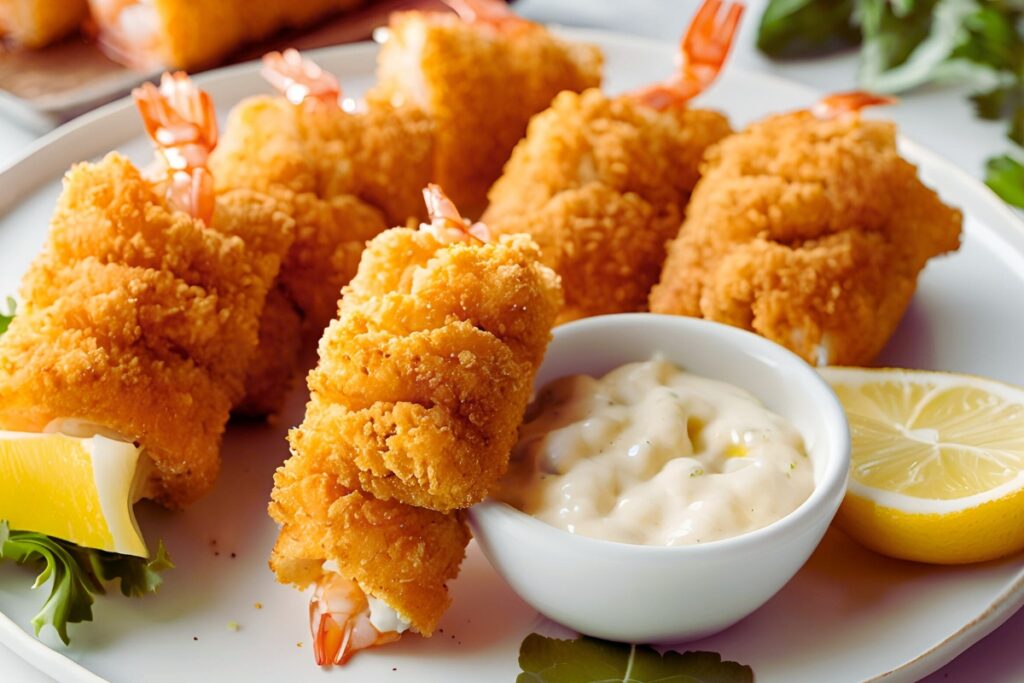
While the classic shrimp roll is undeniably delicious, experimenting with creative variations can add a new dimension to this beloved dish. Let’s explore some exciting twists:
What Is a Golden Shrimp Roll?
A golden shrimp roll takes indulgence to the next level by incorporating a crispy, golden-brown crust. Instead of a traditional bun, this variation often uses a light batter to coat the roll, which is then fried until crispy. The result is a warm, crunchy exterior that contrasts beautifully with the tender shrimp filling.
Recipe for a Golden Shrimp Roll
Here’s how to make a golden shrimp roll:
Ingredients:
- 1 lb shrimp, cooked and chopped
- 4 split-top buns
- 1/2 cup mayonnaise
- 1 tbsp lemon juice
- 1/4 cup panko breadcrumbs
- 1 egg, beaten
- Oil for frying
Instructions:
- Prepare the shrimp filling by mixing shrimp, mayonnaise, and lemon juice in a bowl.
- Lightly toast the buns and fill them with the shrimp mixture.
- Dip each filled bun in the beaten egg, then coat with panko breadcrumbs.
- Heat oil in a skillet and fry the buns until golden brown on all sides.
- Serve immediately with a side of tartar sauce or coleslaw.
International Variants of Shrimp Rolls
Cuisines around the world have embraced shrimp rolls, creating unique international variations of this classic dish.
Asian-Inspired Shrimp Spring Rolls
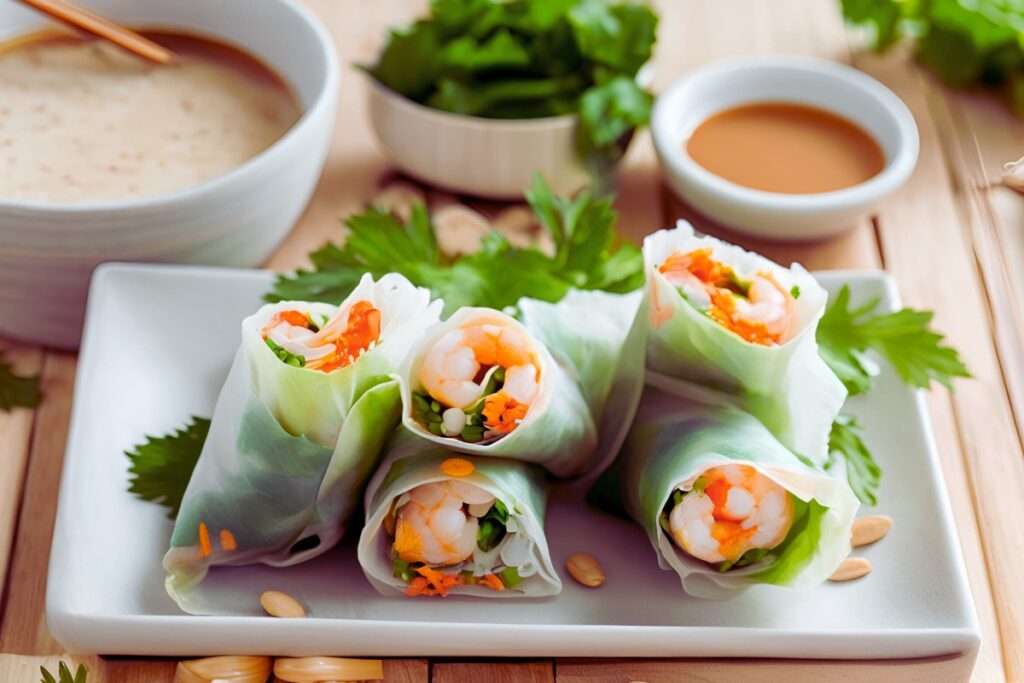
Asian shrimp spring rolls swap the bread for rice paper wrappers, creating a lighter, healthier option. These rolls often include fresh herbs like mint and cilantro, along with crunchy vegetables such as carrots and cucumbers. Served with a side of peanut or hoisin dipping sauce, they’re a refreshing take on the traditional roll.
New England-Style Shrimp Rolls
The New England-style shrimp roll highlights simplicity, using minimal ingredients to emphasize the natural sweetness of the shrimp. Cooks typically toss the shrimp in a light mayonnaise dressing and serve them in a warm, buttery bun. This style showcases the coastal flavors of the region and pairs well with sides like potato chips or chowder.
Summary and Final Thoughts
Shrimp rolls are a delightful combination of flavors and textures, making them a versatile dish that appeals to a wide range of palates. Whether you stick to the classic recipe or experiment with creative variations, these rolls are sure to impress.
Key Takeaways for Making and Enjoying Shrimp Rolls
- Quality Ingredients: Fresh shrimp and high-quality bread are non-negotiable.
- Preparation Techniques: Properly cooking and seasoning the shrimp is essential.
- Creative Twists: Don’t be afraid to experiment with different flavors and styles.
Resources for Further Learning and Recipe Exploration
For more inspiration, check out seafood cookbooks, online recipe blogs, and cooking videos. Sites like Pinterest and YouTube are great for discovering unique takes on shrimp rolls that you can try at home.
FAQs About Shrimp Rolls
Shrimp rolls are a beloved dish, but they often come with a few questions. From preparation techniques to storage tips, we’ve compiled answers to some of the most frequently asked questions about shrimp rolls to ensure your culinary experience is as seamless as possible. Let’s dive in!
Are Shrimp Rolls Good for You?
Shrimp rolls can be a healthy option, depending on how they’re prepared. Fresh shrimp is an excellent source of protein, omega-3 fatty acids, and key vitamins like B12. However, the overall nutritional value of a shrimp roll depends on the ingredients used. For instance, buttery buns and creamy dressings can increase calorie and fat content.
For a healthier option, consider using whole-grain or gluten-free buns, lighter dressings made with Greek yogurt, or even lettuce wraps. This way, you can enjoy all the flavors of a shrimp roll without compromising your dietary goals.
Is the Shrimp in a Shrimp Roll Cooked?
Yes, shrimp in most shrimp rolls is cooked. Traditional recipes typically use boiled, grilled, or sautéed shrimp to achieve the perfect texture and flavor. However, some variations, like Asian-inspired shrimp rolls, may use lightly cured or marinated raw shrimp for a delicate and fresh taste.
It’s important to ensure shrimp is cooked to an internal temperature of 120°F for safe consumption if you’re preparing it at home. Proper cooking not only enhances the taste but also eliminates any harmful bacteria.
What Is a Golden Shrimp Roll?
A golden shrimp roll offers a unique twist on the classic dish. Cooks create its signature crispy, golden-brown crust by coating the roll in breadcrumbs or batter and frying it. This variation perfectly suits those who enjoy a crunchy texture paired with the softness of shrimp and creamy filling inside.
Golden shrimp rolls are often served as appetizers and are best enjoyed fresh out of the fryer. Pair them with dipping sauces like tartar or aioli for an extra burst of flavor.
How Many Calories Are in a Shrimp Roll?
The calorie content of a shrimp roll can vary widely depending on its preparation. Here’s a general breakdown:
- Classic Shrimp Roll: Approximately 300-400 calories per serving, with a buttered bun and mayonnaise-based dressing.
- Golden Shrimp Roll: Around 500-600 calories, due to frying and added breading.
- Healthy Variants: Using lettuce wraps and lighter dressings can bring the calorie count down to 150-200.
If you’re monitoring your calorie intake, opting for grilled shrimp and minimal dressing can make a big difference while still delivering delicious results.
Can Shrimp Rolls Be Made Gluten-Free?
Absolutely! Shrimp rolls can easily be made gluten-free by swapping traditional buns for gluten-free bread, lettuce wraps, or even collard green leaves. Additionally, if you’re using breadcrumbs in recipes like golden shrimp rolls, opt for gluten-free breadcrumbs to maintain the dish’s crunchiness without compromising dietary restrictions.
Gluten-free shrimp rolls are just as flavorful and satisfying, proving that everyone can enjoy this classic dish regardless of dietary needs.
What Are Some Low-Calorie Alternatives for Shrimp Rolls?
If you’re looking to enjoy shrimp rolls without the extra calories, there are several alternatives to consider:
- Lettuce Wraps: Replace buns with crisp lettuce leaves for a refreshing and low-carb option.
- Cucumber Boats: Hollow out cucumbers and fill them with shrimp mixture for a crunchy, hydrating base.
- Rice Paper Rolls: Opt for Vietnamese-style rice paper wrappers, which are light and add a fun twist to traditional rolls.
These alternatives maintain the essence of shrimp rolls while keeping the calorie count in check.
How Long Can You Store a Shrimp Roll Safely?
Shrimp rolls are best enjoyed fresh, but if you need to store leftovers, here’s what you should know:
- Refrigeration: Store shrimp rolls in an airtight container in the refrigerator for up to 2 days. Be sure to keep the filling and bread separate to prevent sogginess.
- Freezing: While freezing is not ideal for fully assembled shrimp rolls, you can freeze the shrimp mixture for up to 3 months. Thaw it in the fridge and assemble fresh rolls when ready to serve.
Always ensure shrimp rolls are kept at a safe temperature to avoid spoilage, and avoid leaving them at room temperature for extended periods.
By following these tips, you can enjoy shrimp rolls safely and confidently, whether they’re freshly made or stored for later.

